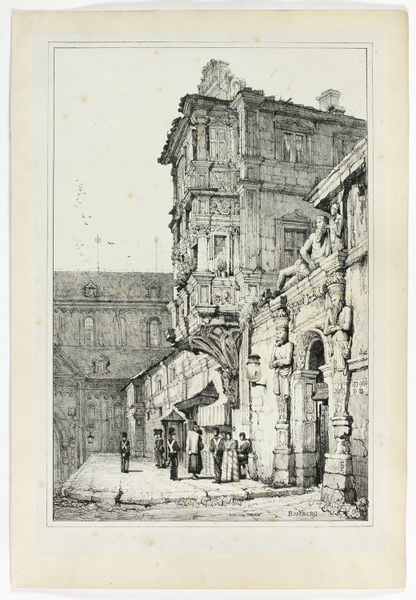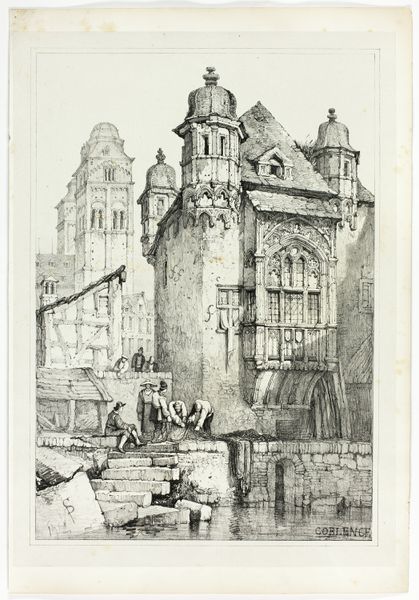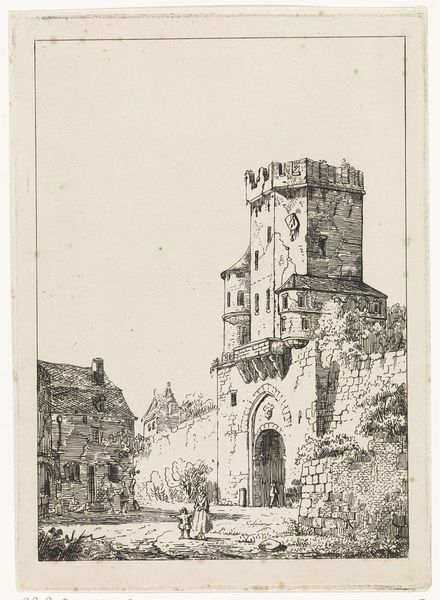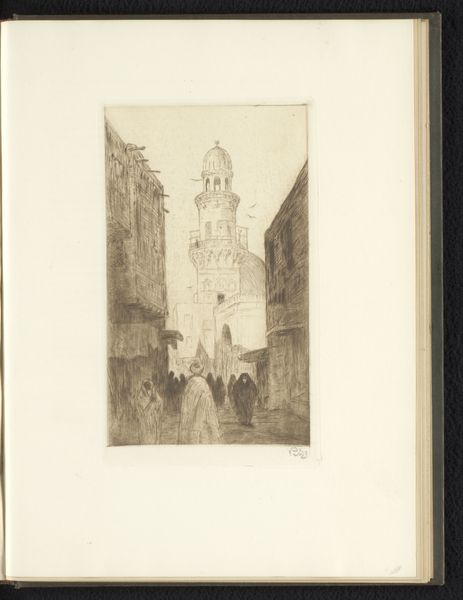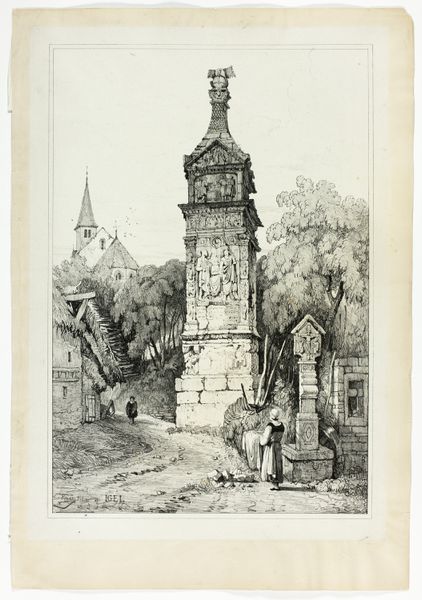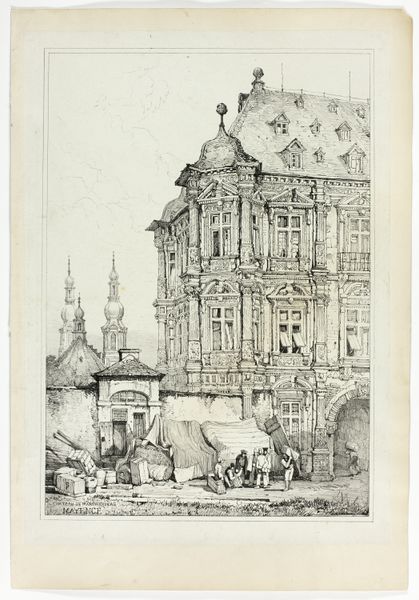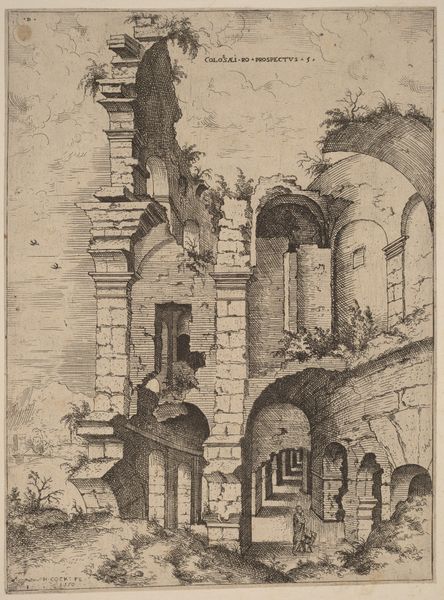
drawing, lithograph, print, etching, paper
#
drawing
#
lithograph
# print
#
etching
#
landscape
#
etching
#
paper
Dimensions: 290 × 425 mm (image); 310 × 445 mm (primary support); 345 × 500 mm (secondary support)
Copyright: Public Domain
Curator: Looking at this artwork, "Andernach," crafted by Samuel Prout around 1833, I’m immediately struck by its delicate yet commanding presence. The technique involves printmaking methods like lithography and etching on paper, all working together. What is your first impression? Editor: It feels melancholy, almost a gothic ruin in miniature. The light is stark, and there's a wonderful density in the way the textures of stone and water are captured. Curator: Prout, you see, was deeply invested in the processes of capturing architectural forms through prints; the lines, tones, and compositions, were all mediated by both the printing press and the socio-economic context of print production in early 19th century Europe. Prints were an industry! Editor: Agreed. But I see an acute study in contrasts. The massive, ornamented tower dominates the composition against the humble bridge and diminutive human figures; even the crisp lines and cross-hatching against the relative flatness of the sky. Curator: True, the print technique would definitely allow Prout to amplify the sublime qualities inherent in architecture viewed by everyday folk. Prout really sought out such crumbling remnants in the landscape, almost as if they themselves were resisting the forces of industry bearing down upon Europe at the time. Editor: These aren’t simply picturesque, idealized landscapes. They’re documents, visual records meant for mass consumption – a way of knowing, controlling, even owning the experience of the natural world via image production. And let's consider that dominant vertical—that looming tower and church—are really working as visual anchors. Curator: What fascinates me most is how Prout combined etching and lithography, two methods reliant on chemistry and mechanical means that allowed for nuances of shading and subtle textural variation... he's not just showing the thing, but investigating the how of representation through reproduction! Editor: I think that in "Andernach," Prout has given us not just a place, but a poignant moment captured in time. The structural elements all coalesce into a haunting image. Curator: Precisely; it encourages us to delve beyond mere appearance to unearth the layers of creation behind such views and their value. Editor: An investigation in art, culture, commerce, and a dash of the sublime indeed!
Comments
No comments
Be the first to comment and join the conversation on the ultimate creative platform.

